10 Incredible Discoveries Around the World
Escape rooms are naturally about all things discovery. That being said, I thought our readers might enjoy learning about some surprising discoveries throughout history. I was sure to include tons of images so you can observe these incredible discoveries for yourself. Let’s get right into it!
The Antikythera Mechanism
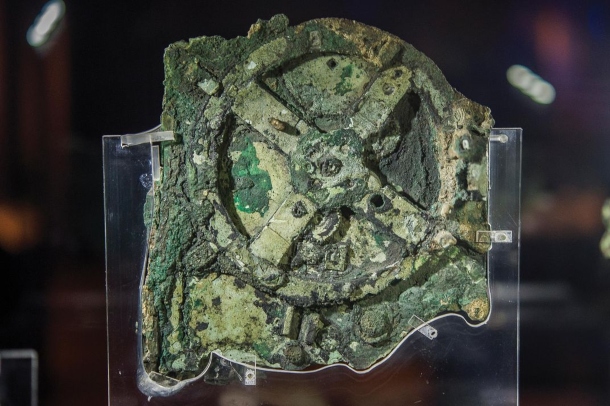
We found The Antikythera Mechanism over 100 years ago in a shipwreck off the Greek island Antikythera. Albeit, for a long time we had no idea what it was. More recently, some have even described it as the world’s first computer. To the casual eye, this looks like a moss-covered rock you would find somewhere in the woods. Yet upon further investigation, you would find at least a dozen gears so precisely placed it would have worked with the precision of a modern watch. This is astonishing considering the device is around 2000 years old.
the Antikythera Mechanism’s purpose was to predict astronomical positions and eclipses for calendar and astrological purposes decades before previously believed. In its heyday, you could use the device to track the paths of the Sun, Moon, and planets with striking accuracy. This device truly changed the way we view ancient seafaring and the development of devices like these throughout history.
“The Siberian Ice Maiden” – 2500-Year-Old Mummy With Animal and Flower Tattoos
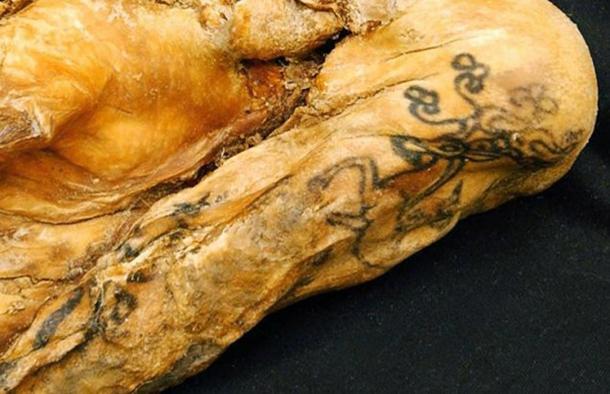
This captivating Mummy was uncovered back in 1993 in Altai, and remarkably her tattoos look like they are designs from the ’90s! Intricate and colorful arrangements of animals and flowers cover her skin.
The harsh climate in which she was laid to rest in 2500 years ago is the reason we can still see her tattoos to this day. Based on my own observations of the photos below, it looks like this ancient expressive warrior’s whole left arm was a work of art.
Why do I say “warrior”? She is believed to have been a noble of some kind because her final resting place was alongside male warriors and 7 horses. All of this makes up some great evidence for us to assume that this legendary maiden had a high rank among the nomadic Pazyryk people. Amazing! Anyone else inspired by the ‘Siberian Ice Maiden’?
Fossils of Rats the Size of Dogs
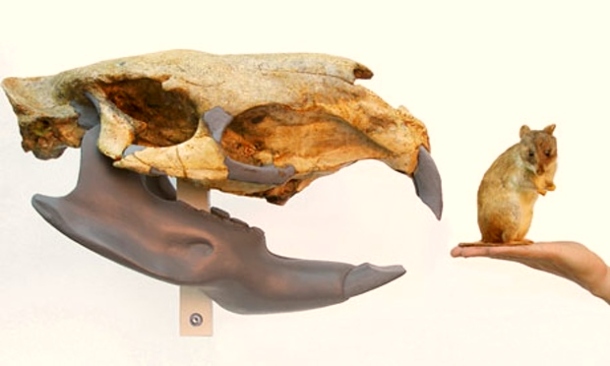
Can you imagine hearing something scurrying through your kitchen only to walk in on a rat the size of Yorkshire terrier? (shout out to my fellow dog lovers) Surely, you wouldn’t want to experience that… and yeah, we don’t want to either. I wish I was joking but, these terrifyingly enormous rodents actually existed.
In fact, these giant rats were 10 times the size of modern rats. This fossil I’m calling the giant rat comes from the genus of rats known as Coryphomys and it is the largest species of rat (we know of) to ever have existed. The groundbreaking fossils were in East Timor and we discovered the remains back in 2015.
Helping lead the project is Dr. Louys of the ANU School of Culture, and she stated that the earliest records of humans on East Timor date to around 46,000 years ago. Louys also stated that this species died out 1000-2000 years ago.
That means humans lived with these rats for thousands of years! Above all, I think we can agree on one thing – yikes.
The Mystery of Pharaoh Hatshepsut Finally Solved
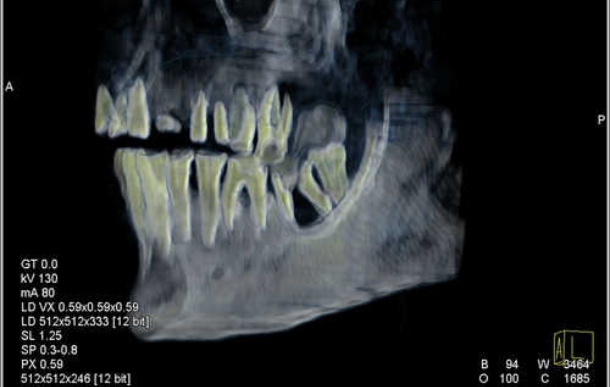
Hatshepsut ruled over ancient Egypt roughly 3500 years ago, and she is considered by many to be one of the great Pharaohs of Ancient Egypt. Eventually, after many centuries, archeologists discovered her remains in a tomb in the Valley of the Kings in 1903.
Inside the tomb were the mummified bodies of 2 females, one of whom was the infamous Pharaoh, and the other was her trusted nurse.
With this discovery arose a question… which mummy was the real Hatshepsut? There was no clear way to identify which mummy was Hatshepsut and which was the nurse, so this case remained unsolved for over 100 years.
Due to ever-advancing technology, we were finally able to take a unique look inside the tomb of Hatshepsut in 2007. CT scans of the items in the tomb as well as the mummies revealed the key to this century-old mystery.
The scans revealed that one of the mummies was missing a tooth. Sure enough, an exact match was in one of the jars containing the organs of the true Pharaoh. Researchers finally identified the real Hatshepsut – all thanks to her poor eating habits. So on that note, we say enjoy your sweets!
Roanoke, The Lost Colony
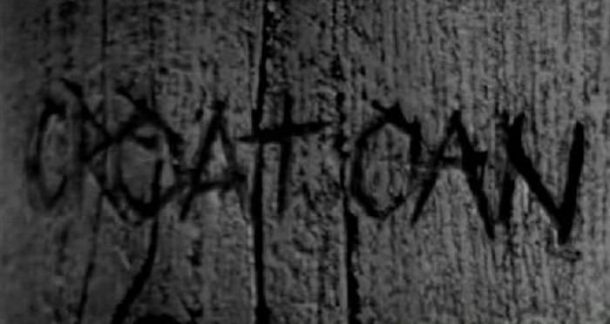
The American settlement Roanoke (located off the shore of present-day South Carolina) mysteriously became a ghost town with no trace of its settlers over 450 years ago. Indeed, the only thing there was an eerie carving in a wooden post that read, “Croatoan”.
In 1547, Governor of the colony John White and 115 settlers landed on the island. White soon sailed back to England to regain fresh supplies for his colony, but the journey took longer than expected due to an outbreak of war between the Spanish and English.
When all was said and done and White got home to Roanoke, there was absolutely no trace left of the colony other than that fateful carving. In fact, even his wife, children, and grandchild were missing. What happened to the infamous inhabitants of Roanoke remains one of the oldest mysteries in the United States to this day.
Skeleton Found Under a Parking Lot Turns out to be King Richard III
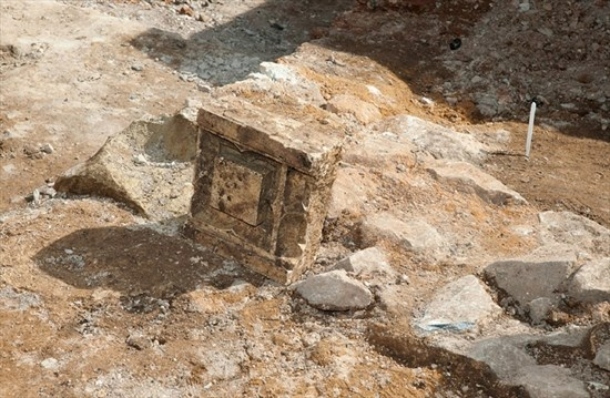
Kind Richard III of England died in battle in 1485. Somewhere in history, we paved over his burial site with a measly parking lot. Who knows how we missed that one! Regardless, researchers were able to verify his identity thanks to DNA testing. Hip-hip-hurray for advancements in technology!
Thus, Richard III received a proper burial in 2015. A distant cousin of the king read this poem at the celebratory reburial ceremony:
“My bones, scripted in light, upon cold soil,
a human braille. My skull, scarred by a crown,
emptied of history. Describe my soul
as incense, votive, vanishing; your own
the same. Grant me the carving of my name.”
11th Century Viking Coin Found in Maine That Could Rewrite History
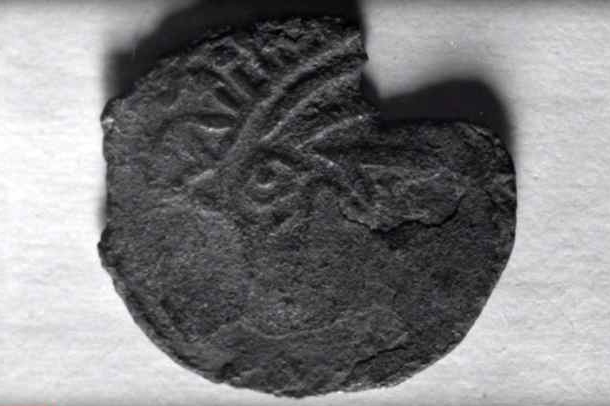
In 1957, an amateur archeologist discovered a mysterious coin less than an inch underground on the coast of Maine. At first, experts misidentified the coin as a British penny from the 12th century. However, that changed when the coin was reexamined in 1978.
Upon closer inspection, the coin was found to actually be a Norse coin estimated to be forged between 1065 and 1080. The Goddard site where the coin was found is from around 1180 to 1235.
This all adds up for you to assume that the Norse made a trip to North America as they were known to sail to Greenland during this time period. So, did the eastern world intermingle with the west far before previously thought? We still don’t know for sure.
According to History Channel, “…the penny’s coastal origin may offer evidence that the Vikings traveled further south than Newfoundland or that the coin might have been traded locally. “
All things considered, the artifact was the only Norse item among many pieces found at the site. This all leads to speculation of a hoax.
Could it have made it over to North America via trade with natives from the Norse in Newfoundland/Greenland at the time? These are questions we still don’t have the answers to.
What do you think?
New Thalattosaur Species Discovered in Southeast Alaska
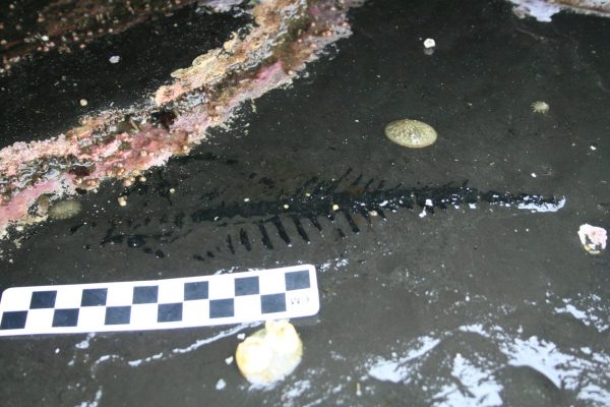
Despite what you may think, Thalattosaur was not a dinosaur. In fact, this guy lived long before dinosaurs even existed!
U.S. Forest Service Geologist Jim Baichtal was walking along the beach in the Keku Islands when he helped discover a mysterious fossil in 2009. They had no idea what they had stumbled upon, but he knew it was something special.
Baichtal immediately pulled out his flip phone to take a photo to send over to his someone who may know more. He quickly sent the photo to his expert friend Pat Druckenmiller, Paleontologist and Director of the Museum of the North at the University of Alaska Fairbanks.
Druckenmiller immediately identified the fossil as a Thalattosaur. Despite the quick classification, he could tell it was unique because of the creature’s pointy head.
It took scientists 3 long years just to extract the fossil from the rock. On top of that, it took 6 more years of tedious research before it was finally concluded that the specimen is, in fact, a new species. This ancient beast now goes by the name Gunakadeit and is confirmed to be 220 million years old!
Kind of makes the 9 years of research seem like the blink of an eye, doesn’t it?
Baghdad Batteries
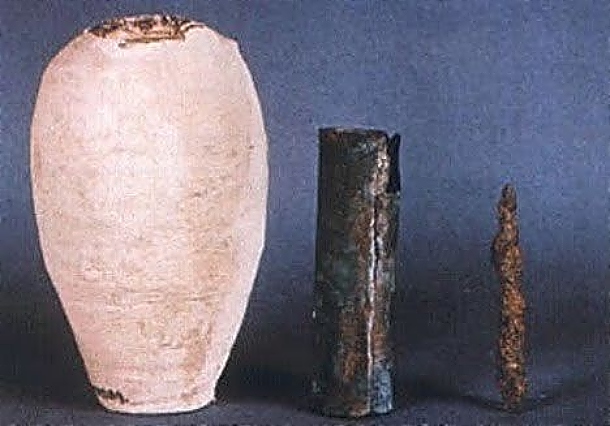
Sorry, Volta. Looks like you didn’t invent the battery in 1800 – you reinvented it!
Wilhelm Konig first described the artifacts he found at the National Museum of Iraq in 1938 where they remain today. Iron, copper, tin and were all sealed inside of the jar with asphalt. It was clear to him that these weren’t just ordinary jars as previously thought.
Mythbusters (a popular tv program) recreated the item and confirmed that the batteries in their design can indeed hold an electric charge. Unfortunately, this myth being “plausible” doesn’t exactly prove that the items were used as batteries for ancient Gameboys.
So, is it possible that the creators were unaware of the electric capabilities of the contraption?
It is also noteworthy to point out that the jars that held scrolls during the Persian Empire period look similar to the “Baghdad Battery” jars.
A widely accepted theory is that the 2200-year-old device was simply used to electroplate items (such as putting a layer of one metal onto the surface of another).
With all that being said, nobody can say for sure what the item was used for. However, it is certain that man invented the battery (even if by accident) long before previously believed.
Oldest Cheese Ever Found
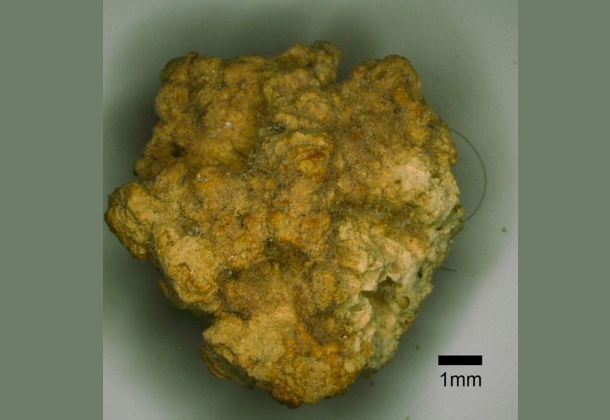
All I have to say is, you’ve gouda brie kidding me! This ancient cheese was discovered in the Taklamakan Desert in Xinjiang, China, and it dates all the way back to 1615 BCE (wait… BCE doesn’t stand for ‘before cheese existed’?). It was discovered inside of the throats and stomachs of well-preserved mummies. This is definitely nacho average piece of cheese.
“We not only identified the product as the earliest known cheese, but we also have direct … evidence of ancient technology” says Andrej Shevchenko from Germany’s Max Planck Institute of Molecular Cell Biology and Genetics.
Scientists have also found fragments of cheese-making strainers in Poland that date back more than 7,000 years, and there are Danish pots from 5,000 years ago that hold what could be butter or cheese but can agree that the cheese in question is the oldest ever found.
Cheese has come a long way since then, and life couldn’t be cheddar!
With all of the amazing discoveries in recent years, who knows what we will uncover in years to come?
It can be fun to speculate what humanity may uncover in future times. Who knows what astounding information will pop up and change the way we view history forever. What do you think is out there waiting to be found?
Escape rooms can be a fun way to look into real history and even theorized future settings. Want to check out an escape room for yourself?
See if there is a Big Escape Rooms location near you by clicking here.





